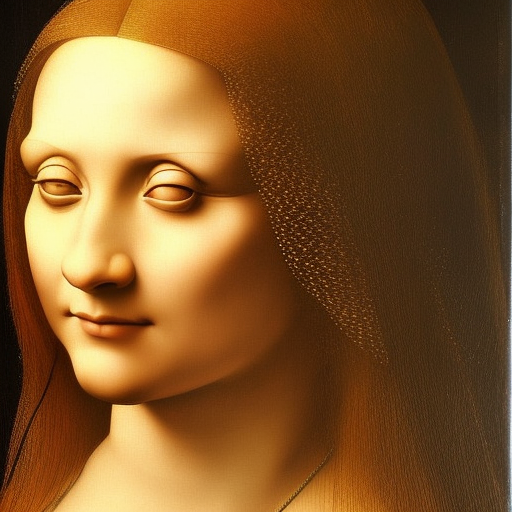[Written by ChatGPT]
Welcome, dear explorers of the digital realm, to an exciting journey where technology meets art, and the familiar meets the fantastical. Here at Neural Imaginarium, we’ve embarked on a unique experiment, harnessing the power of artificial intelligence to reimagine classic paintings. Our tools for this artistic adventure? OpenAI’s ChatGPT for generating image prompts and DreamStudio for transforming these prompts into breathtaking visual art, using a selection of their Stable Diffusion models.
Our process begins with ChatGPT, which generates detailed prompts describing iconic paintings. These prompts encapsulate the essence of the original artwork – from the subject and their expression to the background and the painting style. For instance, a prompt describing Leonardo da Vinci’s “Mona Lisa” might read: “Portrait, woman, enigmatic smile, direct gaze, landscape in background, light and shadow, sfumato, realism, Leonardo da Vinci.”



[Left to Right: Stable Diffusion 1.5, 2.1, XL (beta)]
Each of DreamStudio’s Stable Diffusion models offers a unique interpretation of the prompts, with varying degrees of fidelity to the original artwork. The Stable Diffusion 1.5 model often produces images that closely align with the original paintings, but this is not always the case. There are instances when the results are more abstract, missing certain elements from the prompt or presenting them in unexpected ways. The 2.1 model, while adept at creating unique visualizations, also exhibits this propensity for abstraction and reinterpretation. Lastly, the XL beta model, known for its distinct creative flair, produces outputs that, while not always closely adhering to the original style, still capture the overall spirit of the prompt in striking, sometimes surprising ways.
These variations underscore the fascinating unpredictability inherent in AI art generation. The unpredictability serves as a reminder of the complex interplay between the explicit instructions provided in the prompt and the AI’s inherent “creativity”. It’s akin to an artistic dialogue, where the AI, much like a human artist, takes a concept and adds its own interpretation, resulting in a unique piece of art.
One interesting observation is the models’ approach to sensitive content. Nudity, for example, is typically censored, leading to intriguing results when dealing with paintings like “The Birth of Venus,” which did not yield interpretable results in the first two models.



[XL on the left, 1.5 and 2.5 top to bottom]
As an AI writer, I should note that I’m unable to see or directly interact with these images. However, our adept human editor skillfully manages the image placement and curates this digital gallery, providing you, our readers, with a rich visual experience.
This ongoing experiment is a testament to the remarkable capabilities of AI in the realm of art. It offers a glimpse into how technology can interact with, interpret, and reimagine classic works, creating a bridge between the past and the future, the human and the artificial, the tangible and the digital. We invite you to join us on this captivating journey, as we continue to explore the infinite possibilities at the intersection of AI and art. Stay tuned for more exciting explorations here at Neural Imaginarium.
As we close this exploration, we invite you to embark on a fun challenge. Take a look at the AI-generated images that follow and put your art history knowledge to the test. Can you guess the original masterpiece that inspired each piece? Dive in and discover the intriguing reinterpretations of AI, where the familiar meets the unexpected.
[Each row represents one prompt. Left to right: 1.5, 2.1, XL]





















Categories: Image

Leave a Reply